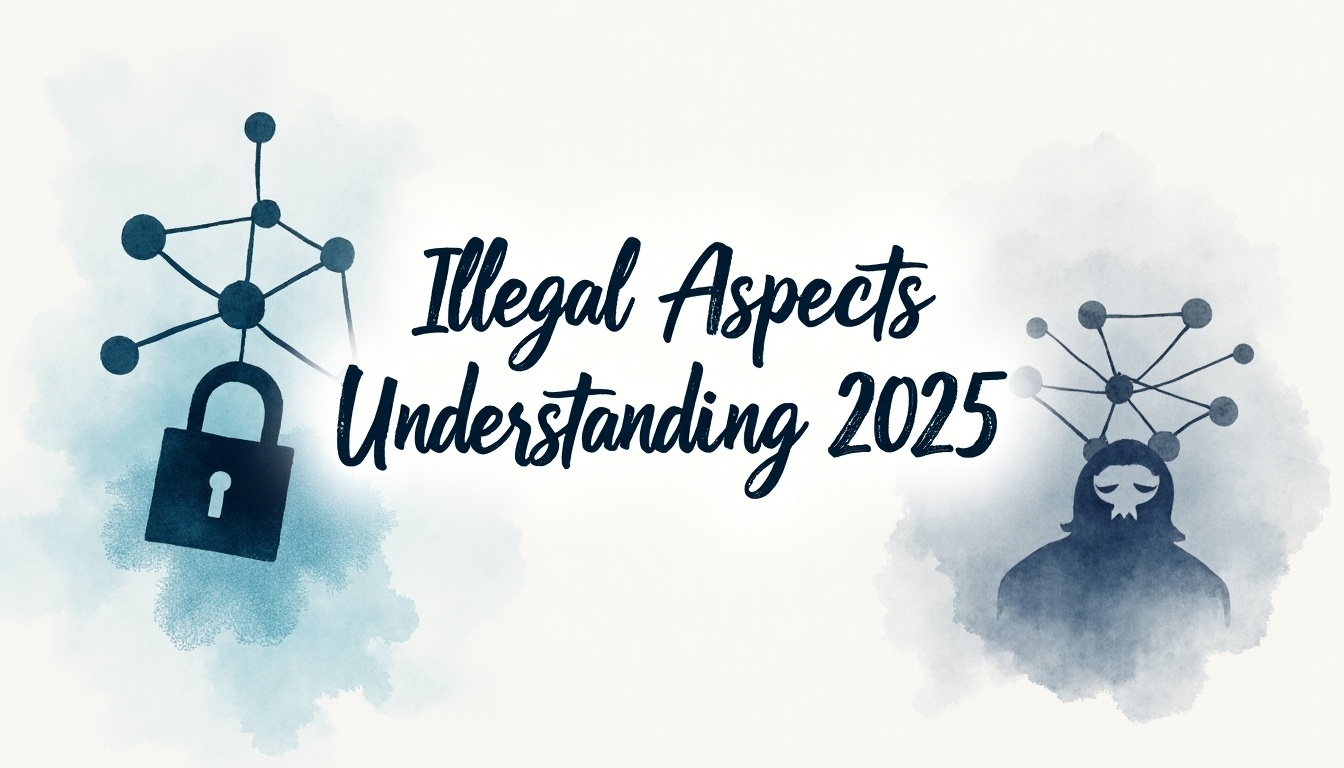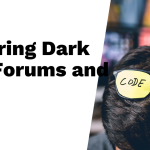In 2025, the dark web remains a complex and largely hidden part of the internet, accessible only through special software like Tor, offering users anonymity. It is estimated to be thousands of times larger than the surface web with around 30,000 active hidden sites. Unfortunately, close to 60% of these sites engage in illegal activities including drug sales, cybercrime services such as hacking tools and stolen data trading, weapons trafficking, human trafficking, and financial fraud. Bitcoin still dominates transactions but privacy coins like Monero are gaining ground for added secrecy. While law enforcement efforts continue worldwide, advanced technology and anonymity keep making detection difficult.
Table of Contents
- What Is the Dark Web and Its Size in 2025
- Common Illegal Activities on the Dark Web
2.1. Illegal activities on the dark web cover a wide range including drug trafficking, cybercrime, weapons trade, human trafficking, and financial fraud.
2.2. Drug trade is one of the most prominent illegal activities, with dark web markets facilitating roughly 20% of global drug sales.
2.3. Cybercrime services like hacking tools, stolen data, and malware are widely available and growing rapidly.
2.4. Weapons and arms trafficking are facilitated through listings of firearms, ammunition, and explosives.
2.5. Human trafficking, including sexual exploitation and forced labor, has a presence on the dark web.
2.6. Financial fraud, including identity theft, counterfeit currency, and stolen credit card data, is common.
2.7. Illegal file sharing and distribution of pirated content also form a significant part of dark web activity.
2.8. Discussion forums for sharing hacking techniques and illicit information contribute to the ecosystem.
2.9. Illegal pornography and other prohibited content, although smaller in volume, are present on the dark web.
2.10. Promotions and advertisements for various illegal goods and services support the dark web’s illicit economy. - How Drug Trade Operates on the Dark Web
- Cybercrime and Hacking Services Growing Rapidly
- Weapons and Arms Trafficking Statistics
- Human Trafficking and Its Dark Web Presence
- Financial Fraud and Identity Theft Trends
- Breakdown of Illegal Content by Category
- Dark Web User Distribution Across Countries
- Law Enforcement Actions Against Dark Web Crime
- Technological Advances Affecting Dark Web Crime
- Challenges in Monitoring and Controlling Dark Web Crime
- The Role of Cryptocurrencies in Dark Web Transactions
- Future Trends in Dark Web Economy and Security
- Frequently Asked Questions
15.1. What types of illegal activities are most common on the dark web in 2025?
15.2. How do law enforcement agencies track crimes on the dark web despite its anonymous nature?
15.3. Is accessing the dark web itself illegal in 2025?
15.4. What role does cryptocurrency play in illegal transactions on the dark web today?
15.5. How has the legal framework evolved around dark web crimes by 2025?
What Is the Dark Web and Its Size in 2025
The dark web is a hidden layer of the internet that you can only access using special software like Tor, which encrypts your activity to keep it private and anonymous. Unlike the regular internet, or surface web, the dark web is vast, estimated to be about 5,000 times larger, and contains around 30,000 active hidden websites in 2025. While it offers a space for privacy and free speech, roughly 60% of these sites are involved in illegal activities, making it a hotspot for illicit trade. Illegal transactions on the dark web generate around $1.5 billion each year. Bitcoin remains the primary cryptocurrency for these dealings, accounting for 98% of payments, though privacy-focused coins like Monero and Zcash are gaining traction due to their enhanced anonymity features. The dark web’s scale and strong encryption make it difficult for authorities to monitor or regulate effectively, which is why it continues to attract users engaged in illegal actions as well as those seeking secure, anonymous communication.
Common Illegal Activities on the Dark Web
The dark web in 2025 remains a hub for a wide range of illegal activities that continue to challenge law enforcement and cybersecurity efforts. One of the most prominent areas is drug trafficking, with dark web markets accounting for roughly 20% of global drug sales. These marketplaces list thousands of narcotics, prescription medications, and controlled substances, enabling buyers and sellers to operate with relative anonymity. Cybercrime also thrives on the dark web, where hacking tools, stolen data, and malware are widely available. Services like ransomware-as-a-service have seen rapid growth, and over 15 billion compromised credentials are traded, fueling identity theft and financial fraud. Weapons trafficking is another serious issue, with tens of thousands of listings for firearms, ammunition, and explosives. The United States leads in both listings and sales, followed by Europe and Russia. Human trafficking, including sexual exploitation and forced labor, has a troubling presence as well, contributing to a global criminal industry worth billions. Financial fraud is pervasive, involving stolen credit card details, counterfeit currency, and forged documents, with millions of compromised personal data points circulating in underground markets. Illegal file sharing and pirated content constitute a significant portion of dark web activity, alongside forums where users exchange hacking techniques and illicit knowledge. Though smaller in volume, illegal pornography and other prohibited content also exist on the dark web. Supporting this ecosystem are numerous promotions and advertisements for various illegal goods and services, which help maintain the illicit economy despite ongoing law enforcement crackdowns.
- Illegal activities on the dark web cover a wide range including drug trafficking, cybercrime, weapons trade, human trafficking, and financial fraud.
- Drug trade is one of the most prominent illegal activities, with dark web markets facilitating roughly 20% of global drug sales.
- Cybercrime services like hacking tools, stolen data, and malware are widely available and growing rapidly.
- Weapons and arms trafficking are facilitated through listings of firearms, ammunition, and explosives.
- Human trafficking, including sexual exploitation and forced labor, has a presence on the dark web.
- Financial fraud, including identity theft, counterfeit currency, and stolen credit card data, is common.
- Illegal file sharing and distribution of pirated content also form a significant part of dark web activity.
- Discussion forums for sharing hacking techniques and illicit information contribute to the ecosystem.
- Illegal pornography and other prohibited content, although smaller in volume, are present on the dark web.
- Promotions and advertisements for various illegal goods and services support the dark web’s illicit economy.
How Drug Trade Operates on the Dark Web
Dark web marketplaces host over 44,000 illicit drug listings, ranging from narcotics to prescription medications, making them major hubs for illegal drug trade in 2025. These platforms rely heavily on encryption and the use of cryptocurrencies like Bitcoin and Monero to keep both buyers and sellers anonymous, obscuring transaction trails and complicating law enforcement efforts. Vendors build trust through reputation systems, which encourage repeat business by rating product quality and reliability. To further reduce risk, many markets operate on an invitation or registration basis, limiting access to trusted users and avoiding mass exposure. Transactions often involve escrow services, where payments are held until the buyer confirms receipt, reducing fraud and disputes. Once purchased, drugs are shipped discreetly via postal services, a method that remains challenging for authorities to monitor effectively. Despite periodic shutdowns of major marketplaces, the drug trade quickly adapts by re-emerging under new names or fragmenting into smaller, harder-to-trace platforms. This persistent cycle has expanded global drug accessibility while lowering risks for dealers, sustaining the dark web as a thriving market for illicit substances.
Cybercrime and Hacking Services Growing Rapidly
Cybercrime dominates the dark web, making up about 60% of its marketplaces. Since 2016, Cybercrime-as-a-Service (CaaS) has surged by 300%, making hacking tools and services more accessible than ever. This shift means even those without technical skills can launch attacks using platforms like Ransomware-as-a-Service (RaaS), where ransomware kits are rented or sold to criminals worldwide. Over 15 billion compromised credentials were reported on the dark web by 2021, fueling identity theft and fraud. Common offerings include phishing kits, malware, exploit tools, and stolen personal data such as identity documents and login credentials. Payment card skimming attacks rose by 77% globally in 2022, with dark web vendors supplying the necessary tools. Additionally, forums and marketplaces provide tutorials and support, lowering the barrier for cybercriminal activity. The widespread availability of these services has increased global cyber threats, prompting organizations to adopt dark web monitoring tools to detect and mitigate risks proactively.
Weapons and Arms Trafficking Statistics
In 2025, dark web marketplaces list over 35,000 weapons, including firearms, ammunition, explosives, and illegal accessories. The United States dominates these listings, accounting for 58%, followed by Europe at 11% and Russia at 7%. When it comes to sales, about 60% of transactions are linked to the U.S., with Europe making up 25%. Buyers find everything from handguns and rifles to explosives, often detailed with prices and shipping methods to attract interest. Transactions are mainly conducted using cryptocurrencies like Bitcoin and increasingly privacy coins, helping users stay anonymous and avoid detection. Despite efforts by law enforcement, encrypted communications and hidden marketplaces make tracking these trades difficult. The dark web allows traffickers to reach international buyers beyond traditional illegal channels, spreading weapons globally. Market shutdowns disrupt activity temporarily, but fragmented smaller markets quickly emerge, keeping the trade alive. This ongoing weapons trafficking on the dark web plays a role in fueling violence and crime across different regions, demonstrating the persistent challenge law enforcement faces in curbing this illicit activity.
| Region | Percentage of Weapon Listings | Percentage of Weapon Sales |
|---|---|---|
| United States | 58% | 60% |
| Europe | 11% | 25% |
| Russia | 7% | – |
Human Trafficking and Its Dark Web Presence
Human trafficking remains one of the darkest corners of global crime, with an estimated 25 million victims worldwide. The dark web plays a significant role in supporting traffickers by providing a hidden space where they can advertise victims and connect with buyers while staying out of reach of law enforcement. This illicit trade generates roughly $150 billion annually, with 79% of cases involving sexual exploitation and about 18% related to forced labor, including domestic and agricultural work. Traffickers rely on encrypted messaging platforms and hidden marketplaces on the dark web to communicate and conduct transactions anonymously. Because victims are often exploited across borders, it becomes even harder for authorities to detect and intervene. The anonymity offered by the dark web allows traffickers to operate with reduced risk of exposure, making it a persistent challenge for global security. In response, law enforcement agencies have developed specialized monitoring tools and intelligence techniques to track these activities online, but success depends heavily on international cooperation. Despite difficulties in quantifying the exact volume of trafficking content on the dark web, it remains a critical concern demanding continued vigilance and coordinated action.
Financial Fraud and Identity Theft Trends
Financial fraud remains one of the largest illegal activities on the dark web, accounting for over 34% of its content. In 2022 alone, more than 100 million compromised credit card details were up for sale, making stolen payment information a major commodity. Alongside credit cards, counterfeit currency linked to dark web transactions accounted for over $22 million seized that year. Tools to facilitate identity theft, such as forged documents and personal data sets, are widely traded, fueling an underground market that supports various scams. Globally, personal data breaches have caused estimated losses of $2.7 billion, highlighting the severe financial impact on individuals and businesses alike. Payment card skimming attacks increased by 77% worldwide in 2022, with criminals often purchasing skimming devices and software directly through dark web marketplaces. The stolen financial data is used for fraudulent purchases, money laundering, and account takeovers, often enabled by comprehensive fraud kits sold on these platforms. These kits include phishing templates, malware, and step-by-step instructions, lowering the barrier for would-be criminals. Transactions are typically conducted using cryptocurrencies like Bitcoin and increasingly privacy-focused coins to maintain anonymity. The volume and sophistication of financial fraud and identity theft on the dark web continue to grow, presenting ongoing risks that demand vigilance from both consumers and companies.
Breakdown of Illegal Content by Category
The dark web’s illegal content in 2025 is diverse, with illegal file sharing making up the largest portion at about 29%. This includes pirated software, movies, music, and other copyrighted materials, which remain in high demand despite ongoing enforcement efforts. Close behind, leaked data such as stolen databases and personal information accounts for roughly 28%, illustrating the massive scale of data breaches and privacy violations fueling the dark web economy. Financial fraud listings represent around 12%, covering compromised credit cards, forged documents, and identity theft tools, all critical components of cybercrime operations. News media related to cybercrime and illicit activities form about 10% of the content, serving as a hub for updates and discussions on ongoing threats and law enforcement actions. Promotions and advertisements for illegal goods and services make up 6%, highlighting how sellers actively market everything from counterfeit items to hacking services. Discussion forums, including those centered on hacking techniques, constitute 5%, indicating a strong community aspect where knowledge and tools are exchanged. Drug listings, though only 4%, still represent a significant market segment given the volume of transactions facilitated. Hacked accounts, including social media and email credentials, cover 3%, fueling further fraud and scams. Illegal pornography, while smaller at 1%, continues to be a disturbing presence on the dark web. Weapons listings are the smallest category at about 0.3%, but they remain a critical concern due to the potential for violence. Together, these categories paint a detailed picture of the dark web’s illegal landscape, showing a complex ecosystem with overlapping markets and services that sustain various criminal activities.
Dark Web User Distribution Across Countries
The United States leads in dark web activity, with about 21.4% of daily Tor network users, reflecting its significant role in this hidden internet space. This high usage aligns with the fact that over half of U.S. companies had dark web threat intelligence policies by 2022, showing awareness of the risks tied to this environment. Europe also has major user bases, with countries like Germany, France, the UK, and the Netherlands playing notable roles. Germany, for example, was home to the Hydra Market, which facilitated illicit transactions worth around $1.34 billion before its shutdown, highlighting the scale of illegal commerce centered there. In the UK, roughly 5% of internet users access the dark web, where cybercrime inflicts an estimated £27 billion annual cost on the economy. Meanwhile, Russia accounts for a significant share of dark web content in Eastern Slavic languages, with 36% of DARKINT™ data originating from the region, showing widespread engagement despite government restrictions. Emerging economies such as India are experiencing rapid growth in dark web users and related cybercrime incidents due to increasing internet access and digital adoption. The distribution of dark web users is influenced by factors like internet accessibility, regulatory environments, and cybersecurity awareness, which vary widely across countries. This global spread of users impacts how law enforcement agencies allocate their resources and focus efforts, requiring tailored approaches to address the specific challenges each region faces in combating illegal dark web activities.
Law Enforcement Actions Against Dark Web Crime
Law enforcement agencies have stepped up efforts to combat crime on the dark web, but the challenges remain significant. Operations like Disruptor in 2020 demonstrated the impact of coordinated global action by seizing $6.5 million in cash and cryptocurrencies and arresting several criminals involved in dark web activities. Similarly, shutting down major marketplaces such as Evolution Marketplace in 2021 and the UK-based DarkMarket disrupted illegal trade temporarily, but these closures often lead to fragmentation, with smaller, more elusive markets quickly emerging in their place.
To address these challenges, law enforcement increasingly relies on advanced dark web monitoring and threat intelligence tools. Investments in platforms like DarkOwl, which secured $10 million in funding, enhance the ability to proactively detect illegal activities before they escalate. Governments worldwide have improved international cooperation, enabling coordinated takedowns and sharing of intelligence across borders. Enhanced surveillance and updated legal frameworks are also being developed to better tackle the anonymity and encryption that protect dark web users.
Despite these efforts, the dark web’s decentralized and encrypted nature makes attribution, evidence collection, and prosecution difficult. Criminals adapt by using privacy-focused cryptocurrencies such as Monero and Zcash, invitation-only marketplaces, and sophisticated encryption methods. Law enforcement must continuously evolve tactics, balancing privacy concerns with the need for security. Collaboration between agencies, cybersecurity firms, and regulators remains crucial to disrupt illegal operations while addressing the technical and legal complexities involved.
Technological Advances Affecting Dark Web Crime
Technological progress has significantly reshaped the landscape of dark web crime in 2025. The rise of AI-driven analytics allows cybersecurity experts and law enforcement to detect suspicious patterns and threats on the dark web in real time, improving response times and threat mitigation. However, criminals have adapted by restricting access to marketplaces through invitation-only systems, making infiltration and monitoring much harder. Advances in encryption and anonymizing protocols have enhanced user privacy, complicating efforts to trace illegal activities. A notable shift from Bitcoin to privacy-focused cryptocurrencies like Monero and Zcash has further obscured transaction trails, reducing the effectiveness of traditional blockchain analysis. The growing availability of ransomware-as-a-service platforms has lowered the technical barriers for cybercriminals, enabling less experienced actors to launch sophisticated attacks. Similarly, Cybercrime-as-a-Service offerings provide ready-made hacking tools and services, broadening participation in illicit activities. Automated bots and data scrapers efficiently collect and spread stolen information, increasing the scale of data breaches. Decentralized marketplaces have emerged, dispersing risk and avoiding centralized points vulnerable to shutdowns. Additionally, the use of multi-signature wallets and mixing services adds layers of complexity to cryptocurrency money flows, masking the origins and destinations of funds. Communication linked to dark web dealings increasingly relies on encrypted messaging apps and mobile platforms, allowing discrete coordination while evading traditional surveillance. These technological developments create a constantly evolving challenge for those aiming to curb illegal dark web activities.
Challenges in Monitoring and Controlling Dark Web Crime
Monitoring and controlling crime on the dark web in 2025 remains a complex challenge due to several factors. The use of strong encryption and anonymity networks like Tor makes it difficult to identify users and servers, shielding criminals from straightforward detection. When major marketplaces are shut down, their activities tend to scatter across smaller, fragmented platforms, making it harder for law enforcement to track and disrupt operations effectively. Criminals increasingly adopt privacy-focused cryptocurrencies such as Monero and Zcash, which add layers of complexity to tracing financial transactions compared to traditional cryptocurrencies like Bitcoin. Additionally, criminals employ highly sophisticated operational security practices, limiting intelligence gathering and reducing the success of undercover investigations. The global and borderless nature of the dark web creates jurisdictional hurdles, as differing laws and limited international cooperation slow coordinated responses. High volumes of data and the continuous emergence of new hidden services overwhelm monitoring tools and personnel, while invitation-only and closed forums restrict outsider access, further complicating investigative efforts. Differentiating between users seeking legitimate privacy and those involved in illegal activities also poses a challenge, as enforcement actions risk infringing on legal anonymity. These combined factors keep law enforcement agencies in a constant race to adapt, requiring enhanced international collaboration, advanced technology, and refined strategies to keep pace with the evolving dark web landscape.
The Role of Cryptocurrencies in Dark Web Transactions
Cryptocurrencies continue to play a central role in dark web transactions in 2025, with Bitcoin still dominating about 98% of payments. Despite Bitcoin’s prevalence, privacy-focused coins like Monero and Zcash are gaining ground due to their stronger anonymity features, making it harder for law enforcement to trace transactions. Many users employ mixing and tumbling services to further obscure the origins and destinations of their funds, complicating blockchain analysis efforts. Multi-signature wallets have become common in peer-to-peer trades, adding layers of security and trust between parties without relying on intermediaries. Decentralized exchanges also facilitate anonymous currency swaps, allowing users to convert between cryptocurrencies without centralized oversight, which reduces the risk of exposure. Cryptocurrency payments enable seamless cross-border transactions, bypassing traditional banking restrictions and regulations, which is crucial for illicit trade on the dark web. However, the volatility of cryptocurrencies introduces financial risks, as sudden price swings can impact the value of payments for both buyers and sellers. Law enforcement agencies continue to develop advanced blockchain analysis tools, but these tools face limitations when dealing with privacy coins, which are designed to resist tracing. The use of cryptocurrencies for ransomware payments has grown, fueling cybercrime by providing a relatively untraceable method for criminals to receive funds and complicating recovery for victims. Meanwhile, the ongoing development of new cryptocurrencies with enhanced privacy features keeps shifting the landscape, making it a constant challenge for authorities to keep pace with emerging technologies used to facilitate illegal activities on the dark web.
Future Trends in Dark Web Economy and Security
The dark web economy is set to grow significantly, expected to reach around $1.3 billion by 2028, driven largely by expanding cybercrime and illicit trade. Both criminals and law enforcement are increasingly turning to AI and machine learning, shaping a future where automated tools play a bigger role in both carrying out and combating illegal activities. Marketplaces are shifting towards decentralized and peer-to-peer setups, making it harder for authorities to shut them down or seize assets. Meanwhile, dark web intelligence markets are expanding rapidly, growing more than 20% each year, which helps security teams stay ahead by providing proactive threat data. Privacy-focused cryptocurrencies like Monero and advanced cryptographic methods are becoming common, complicating efforts to trace transactions. Specialized darknet services are also emerging, offering fraud-as-a-service, hacking tools, and even weapon sales as turnkey packages. On the enforcement side, better collaboration between international agencies and private cybersecurity firms is improving detection and response to threats. Corporations are increasingly integrating dark web monitoring into their cybersecurity strategies to prevent data breaches. However, the rise of AI-generated fake identities and synthetic data presents new challenges for fraud detection and evasion. Legal and regulatory frameworks are evolving to keep pace with these developments, aiming to address the complex nature of dark web crimes and cryptofinance.
Frequently Asked Questions
1. What types of illegal activities are most common on the dark web in 2025?
In 2025, common illegal activities on the dark web include drug trafficking, illegal weapons sales, hacking services, and the distribution of stolen data such as personal information or credit card details. These activities thrive due to the anonymity the dark web provides.
2. How do law enforcement agencies track crimes on the dark web despite its anonymous nature?
Law enforcement uses a mix of advanced digital forensics, undercover operations, and international cooperation. They sometimes infiltrate dark web communities, track cryptocurrency transactions, or exploit technical flaws in dark web services to identify suspects.
3. Is accessing the dark web itself illegal in 2025?
Simply accessing the dark web is not illegal in most places, but engaging in illegal activities there is against the law. Users must be careful, as even inadvertent interaction with illicit content can attract legal attention depending on jurisdiction.
4. What role does cryptocurrency play in illegal transactions on the dark web today?
Cryptocurrency remains the main payment method on the dark web because it offers relative anonymity and ease of transfer. Criminals use it to buy and sell illegal goods or services, though authorities are improving their ability to trace suspicious transactions.
5. How has the legal framework evolved around dark web crimes by 2025?
Legal systems worldwide are updating laws to better address the challenges posed by dark web crimes. This includes clearer definitions of offenses, enhanced penalties, and updated rules for digital evidence, aiming to close loopholes and improve prosecution success.
TL;DR The dark web in 2025 remains a vast hidden part of the internet, mostly used for illegal activities like drug trafficking, cybercrime, weapons sales, human trafficking, and financial fraud, generating about $1.5 billion annually. Despite law enforcement efforts and marketplace shutdowns, the use of advanced encryption, AI tools, and privacy-focused cryptocurrencies keeps illegal trade thriving and harder to track. The US leads in user numbers and weapon sales, while global cooperation and technology adoption are key to addressing these challenges. The dark web still serves some legitimate privacy needs, but its illegal aspects continue to pose significant security and regulatory issues worldwide.





